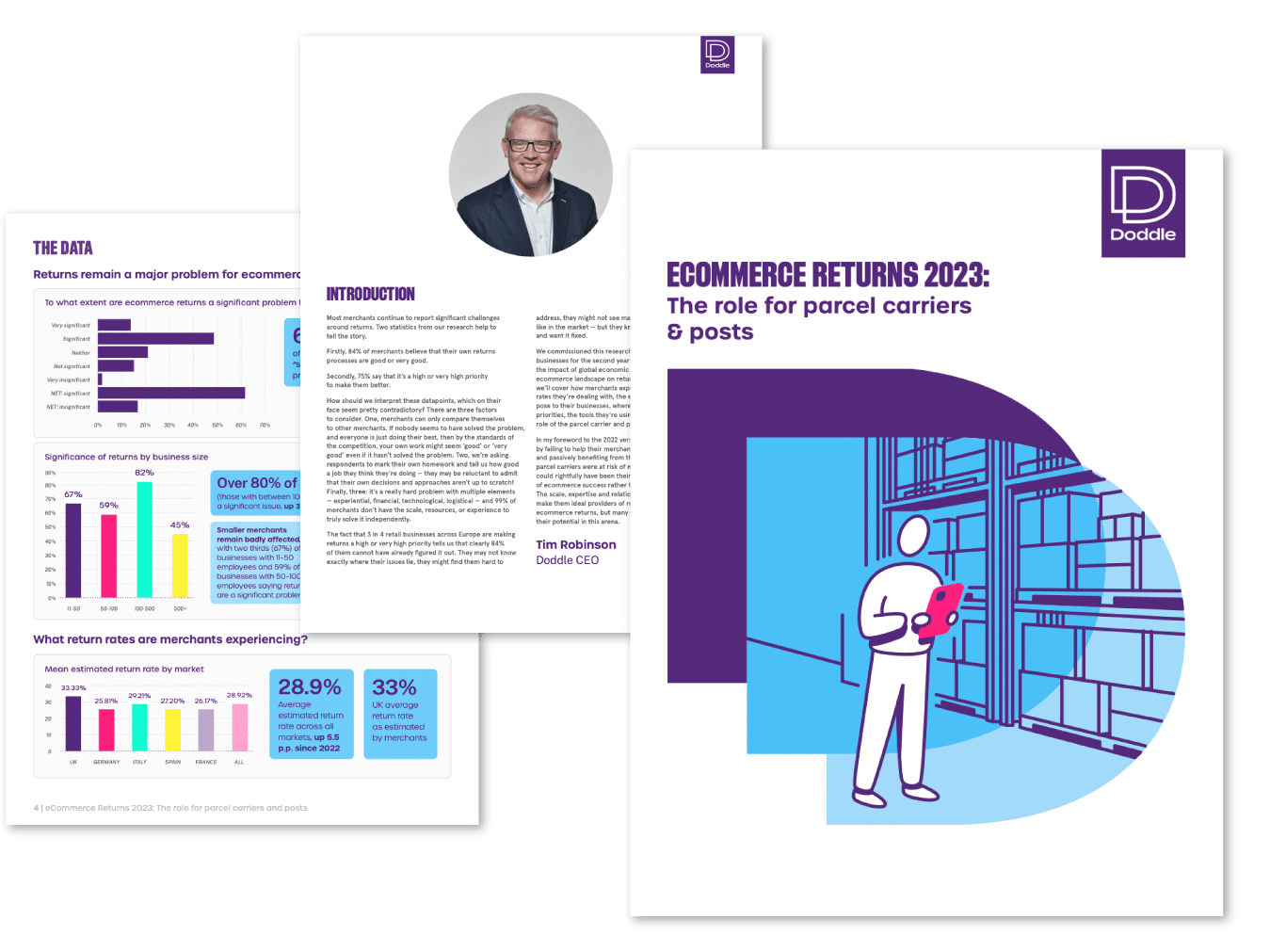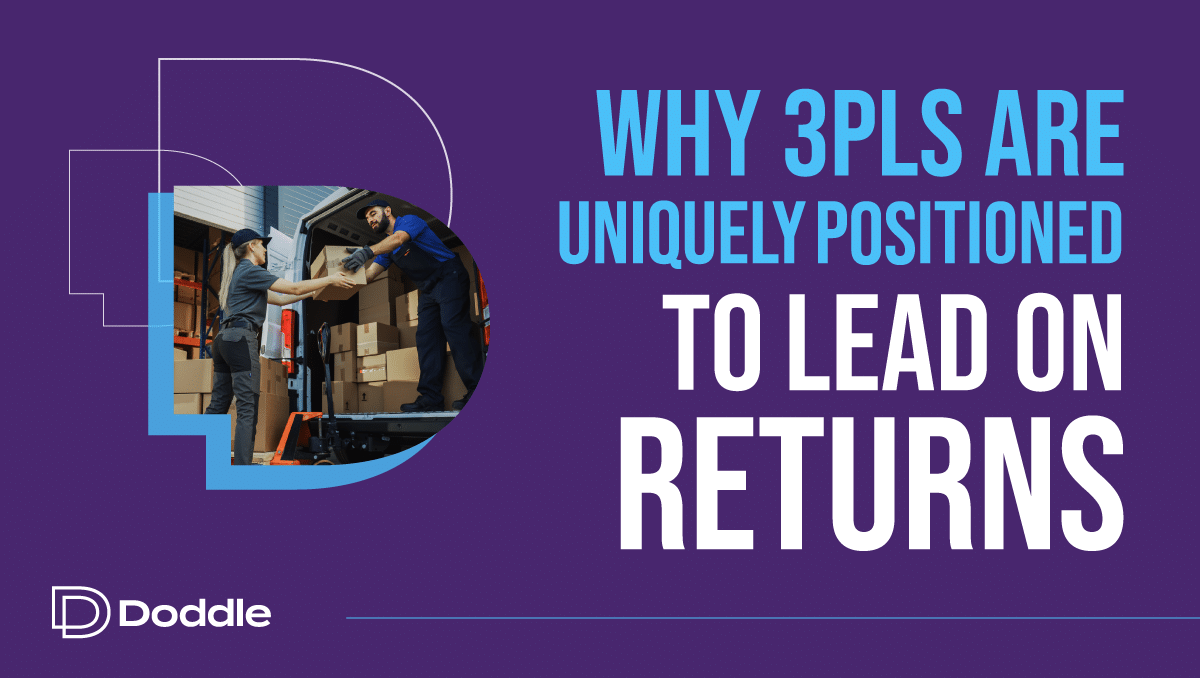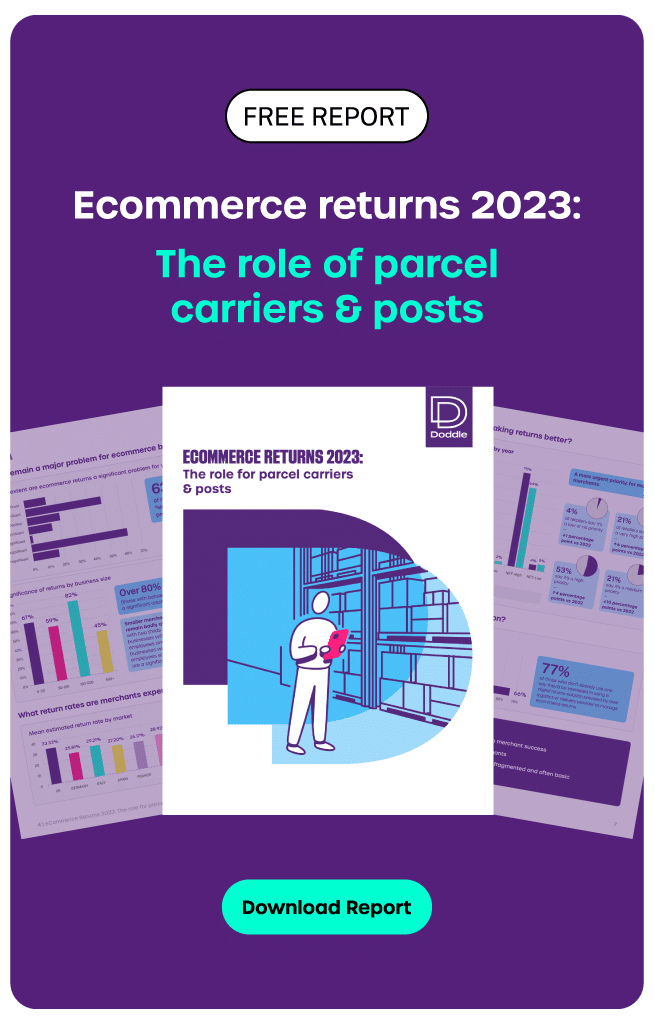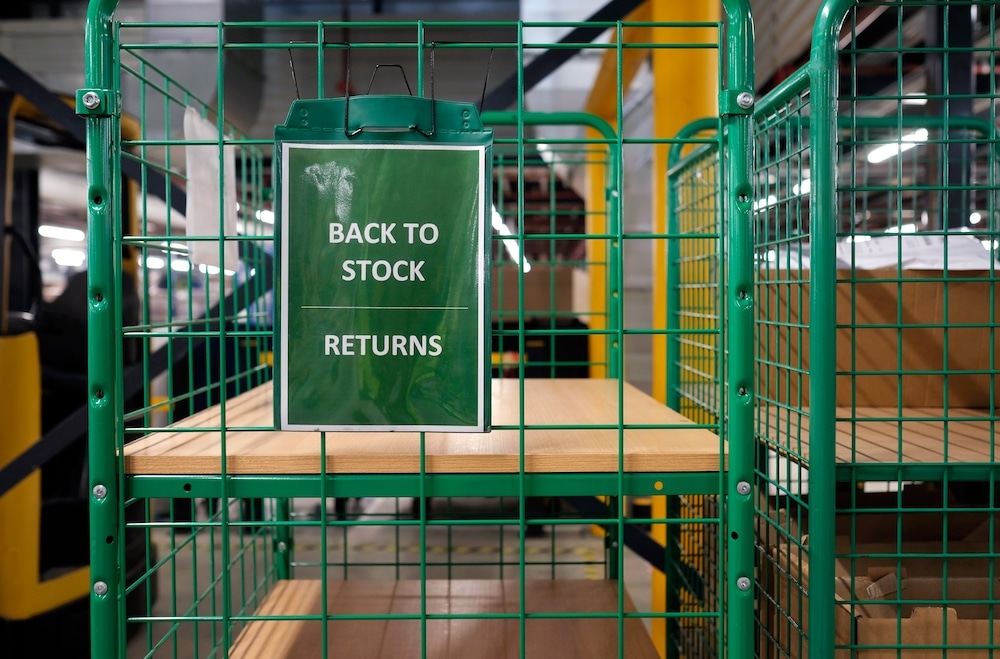Insight / Blog
How 3PLs Can Cut Costs, Reduce Waste and Boost Revenue With Smart Returns Management

Summary: 3PLs should take advantage of returns to help reduce cost, efficiently manage warehouse resources, and aid growth.
Driving down costs across the supply chain is a key goal for third-party logistics (3PL) businesses, particularly during inflationary pressure and labor market shortages. However, while increasingly niche efficiencies and optimisations are being pursued in the outbound logistics journey, reverse logistics still has low-hanging fruit that third-party logistics companies (3PLs) can take advantage of.
By implementing sophisticated returns management systems that go beyond basic, manual processes, 3PLs can completely transform how they handle returns. Sophisticated returns processes provide 3PLs with immediate cost-saving benefits by freeing staff time, reducing transportation costs, and boosting warehouse efficiency. In addition, better returns management also facilitates higher resale rates and faster returns processing, providing consumers with a greater returns experience and improving the retailer’s bottom line.
Intelligent returns management not only helps 3PLs cut costs, but it also aids growth by strengthening their proposition to retailers, helping them attract new clients, and solidifying their position in the competitive logistics landscape.
What are your current returns processes costing you?
Unlike the well-supported fulfilment journey that’s catered to with warehouse management (WMS) and order management (OMS), returns processes still rely on outdated, inefficient, and manual processes, where returns are often left to pile up in cages. The high cost and inefficiency of current returns processes comes from 3 key areas:
A lack of returns data and visibility
Too often, returns arrive at distribution centres with little to no information about the item’s condition or why it’s being returned. There’s frequently no accurate forecast about what is coming back into stock, or the incoming volume of returns, meaning that 3PLs cannot effectively plan staffing and warehouse space to prepare for any incoming returns.
-
Slow and inconsistent processing
With no pre-sort data, staff must manually input each return, assess its condition, and enter this information into existing systems. This is a time-consuming process that requires a large amount of labor while also leading to delays in getting returned items back into stock and being prone to human error, driving up return management costs.
-
Manual decision making
Decision-making is made on an individual basis in the warehouse. This means that each return is dealt with on a subjective basis, creating inconsistent processes that can lead to confusion for warehouse staff, potential customer dissatisfaction with uneven return experiences, and difficulty in scaling operations.
Ultimately, current returns processes are slow, inconsistent, and require a lot of labor, resources, and time—all of which come at a great cost to 3PLs.

Intelligent returns reduce costs
With an intelligent returns management system, 3PLs can better manage warehouse resources, handle more returns efficiently and consistently – and ultimately reduce costs throughout the entire process.
One of the biggest ways that return management solutions provide cost-saving opportunities is by utilizing pre-sort data. With this data, 3PLs gain access to insights about each return at the point customers register it, including what items are being sent back, by whom, and why. This creates a single view of inventory for better stock management and fulfillment decisions.
For example, the pre-sort data can facilitate automatic rerouting to alternative locations if they hit specific criteria, such as sending damaged items or returns of particular SKUs straight to repair or disposal facilities. This saves 3PLs the labor of processing and rerouting these returns themselves while removing extra transportation costs.
In addition, the data eliminates the need for staff to manually input returns data for each item, saving time and labor. It also equips the warehouse with guided steps to disposition each item quickly and accurately through a clear and automated workflow, removing chances of error while optimising the process.
Driving more business and better retail performance through returns management
With visibility of what returns are coming into the warehouse, return management systems enable parcels to be sorted into designated areas in the warehouse on arrival based on the data. For example, all items needing to be repaired can be stored in a designated repair case. By identifying items that have a better chance of being resold (based on SKU data and return reason), these items can be placed into a priority zone on arrival in the warehouse. This will ensure that the most valuable returns are processed first, speeding up the time it takes to process and return the item to inventory for resale.
Returns sorting and prioritisation reduces processing time for 3PLS and prevents a backlog of potentially valuable stock from accumulating in sorting cages, while helping retailers recapture lost revenue by getting items back into stock faster. Not only will returns management systems reduce the time and resources spent processing returns, but it will also create a stronger value proposition for their retail clients and thus aid future growth.
Returns are a 3PL priority
Our data reveals that 63% of merchants see returns as a significant or very significant problem from their business, up 6 percentage points since the previous year. Returns are one of the biggest problems plaguing retailers and have since accelerated the digitisation of returns solutions to help solve rising issues.
For logistics service providers, this urgency on the part of retailers means that they need to be ready to access retailers’ returns data and use it to ensure maximum efficiency in their own operations, enabling intelligent returns processing and a more efficient reverse supply chain.
3PLs need to be ready for returns. Now is the time to invest in sophisticated return management systems to help get ahead of the curve, drive future growth by offering retailers attractive returns offerings, and reduce costs through improved warehousing and transportation efficiency.

Topics:
Related articles
Saving profits and the planet: 4 ways to sustainable & cost-effective returns
Returns drain profits and damage sustainability. Luckily, retailers can implement both cost-effective and sustainable returns using these 4 ways.
Speedy refunds: creating happy customers through fast & effective returns
Find out how speedy refunds can recapture revenue, increase customer loyalty and boost lifetime value.
Why mastering returns is key to 3PL growth
With returns management systems, 3PLs can turn returns from a burden to a competitive advantage.













